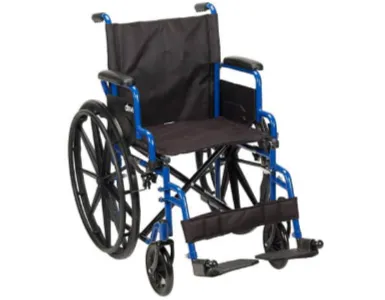What are the best seated back exercises for seniors?
A couple of years ago, I had the same question because I couldn’t do my regular exercises after a severe injury.
And today, I’m here to share with you some of the best seated back stretches that helped me maintain my mobility and improve my range of motion.
Just keep reading.
Table of Contents
Key Takeaways
- Seated back exercises are beneficial because they can strengthen your muscles, correct poor spine posture, and improve your quality of life.
- Seated back stretches take only a few minutes to complete, but you need to do them on a regular basis for maximum results.
- Always consult a specialist if your pain gets worse or you have other medical conditions.
Before I go into details about how to exercise in a seated position, let’s talk about why these stretches should be part of your exercise program.
Are Seated Back Exercises Beneficial?
As specialists from Heritage Manor say,
“Bone density and muscles weaken as we get older, so it is important to gently exercise to keep active and maintain strength.” (1)
Seated exercises are particularly beneficial for those seeking relief from lower back pain and wanting to improve their overall posture.
A strong lower back and core can support our spine, alleviating pressure and discomfort. By incorporating lower back support exercises, seniors can target this crucial area without needing strenuous activity, thus decreasing the risk of exacerbating existing issues or creating new ones.
Seated exercises strengthen lower and upper body muscles, improve poor posture, relieve back pain, and increase blood circulation.
Moreover, many elderly people can’t do intense physical activities to maintain their core muscles, so seated stretches are an excellent way to stay active without risking future injuries.
And any type of exercise for seniors is beneficial for preventing mental health issues, relieving stress, and reducing cardiovascular risks, according to studies. (2)
Finally, let’s see how to do seated back exercises at home!
6 Best Seated Back Exercises for Seniors
The good news about these stretches is that you don’t need any special equipment besides a sturdy chair to sit on. And they won’t take much time off your busy schedule – just a few minutes per week.
However, you should consult with a physical therapist or a specialist if you have significant back pain that affects your daily life.
#1 Gentle Backbend
Seniors often have poor posture because people tend to hunch as they age. And hunching causes extra tension in the back muscles. But you can relieve this pain with this simple, gentle stretch:
- Sit on a sturdy chair. Keep your spine straight and feet flat on the ground.
- Place your hands on your lower back and wrap your thumbs around your hips.
- Press your fingers into your lower back. Inhale.
- When you exhale, you should arch your spine backward. Do it gently and lead with your head (chin tilted, face to the ceiling).
- Hold the backbend and count to five.
- Return to the starting position and repeat 3-5 times per day.
- Watch this video for a demonstration.
#2 Seated Low Back Stretch
This workout is perfect for adults and seniors with low back pain that can’t handle high-intensity activities. It’s a gentle stretch that can relieve spine tension, stretch low back muscles, and reduce pain:
- Start by sitting in a chair with feet flat.
- Bend forward slowly, reaching the floor with your hands.
- Place your hands on the outside of your feet.
- Bend your trunk.
- Move your head forward and down.
- Hold the position for 10 seconds.
- Return to the starting position and repeat the movement five times.
- Do it at least two times per day for optimal effect.
#3 Neck and Chest Stretch
If you’re suffering from neck pain, this seated exercise is perfect for relaxing your neck muscles. It’s also great for people with bad posture:
- Sit up straight in a chair with feet flat on the ground.
- Place your hands at the base of your skull and interwind your fingers.
- Ease your head into your hands.
- Inhale.
- When you exhale, move your left elbow toward the ground. Your right elbow should point to the ceiling.
- Count to two and move back to the original position.
- Repeat by switching the movements – your left elbow should point toward the ceiling and the right toward the ground.
- You should do this chair exercise three times on each side.
Check out this video tutorial:
#4 Seated Trunk Flexion
This stretch is an excellent flexibility exercise, perfect for people that can’t do a workout in a standing position. It improves the mobility of your lumbar spine and helps you maintain muscle strength:
- Seat in a sturdy chair with feet flat.
- Cross your arms over the chest.
- Curl your back forward.
- Hold for ten seconds and return to the original position.
- Spend a few minutes per day doing this stretch for maximum effect.
#5 Reach Back Stretch
The Reach Back is an upper back stretch to improve your range of motion and ease shoulder, back, and muscle tension. It’s a beginner-level exercise, so it shouldn’t give you much trouble:
- Sit on a chair with your back straight. Keep your foot flat on the floor.
- Inhale.
- Exhale. While exhaling, interlace your hands behind your back. If it’s not a comfortable stretch, you can grab your wrists or elbows instead.
- Inhale, sit up tall and roll your shoulder blades up and down.
- Exhale. Straighten your arms.
- Count to three and release your hands.
- Return to the starting position.
#6 Seated Cat-Cow
The Seated Cat-Cow is an advanced back exercise, so it may take a couple of tries to get it right. But it’s beneficial for strengthening your core muscles and relieving low back pain:
- Sit on a chair with feet flat. Your knees should be at a 90-degree angle.
- Place your hands on your knees with your fingers pointing toward each other.
- Inhale.
- While exhaling, press into your hands. Use your entire spine to arch your back.
- Inhale again. Roll your shoulder blades forward and drop your chin to your chest.
- Reverse the movement on the next exhale.
Here’s a video demonstration:
Navigate to my detailed article that delves into the best exercise for lower back pain for seniors, providing step-by-step techniques to enhance lumbar support and reduce discomfort.
Take a look at this short video summary.
FAQs
1. How can seniors strengthen their lower back?
You should do stretches and aerobic exercises for your lower back to keep your muscles strong, prevent injuries, and relieve back pain.
2. How to relieve back pain by sitting?
Use a back support, such as a pillow or a towel, at the curve of your back to relieve pain and tension.
3. What exercises should I avoid with lower back pain?
Avoid high-intensity exercises that stress your joints, such as jumping, running, leg lifts, etc. However, consider incorporating back pain asanas and exercises for women over 60, which are typically gentler and designed to cater to specific needs.
Conclusion
A few minutes of low-impact workouts, such as seated back exercises for seniors, can minimize back pain, relieve tension, and improve body posture. You have to find the right one for you.
However, ensure you don’t do any advanced exercises without consulting your physical therapist. And stop the activity if you feel sharp pain or any severe discomfort.

What do you think about these seated back exercises for seniors? Which is your favorite safe exercise for seniors? Share your thoughts in the comment section.
Resources:
1. chair based exercises / Summerdyne, Worcestershire [Internet]. Heritage Manor. 2018. Available from: https://www.heritagemanor.co.uk/2018/04/benefits-chair-based-exercises-summerdyne/
2. Langhammer B, Bergland A, Rydwik E. The importance of physical activity exercise among older people. BioMed Research International [Internet]. 2018;2018:1–3. Available from: https://www.ncbi.nlm.nih.gov/pmc/articles/PMC6304477/





